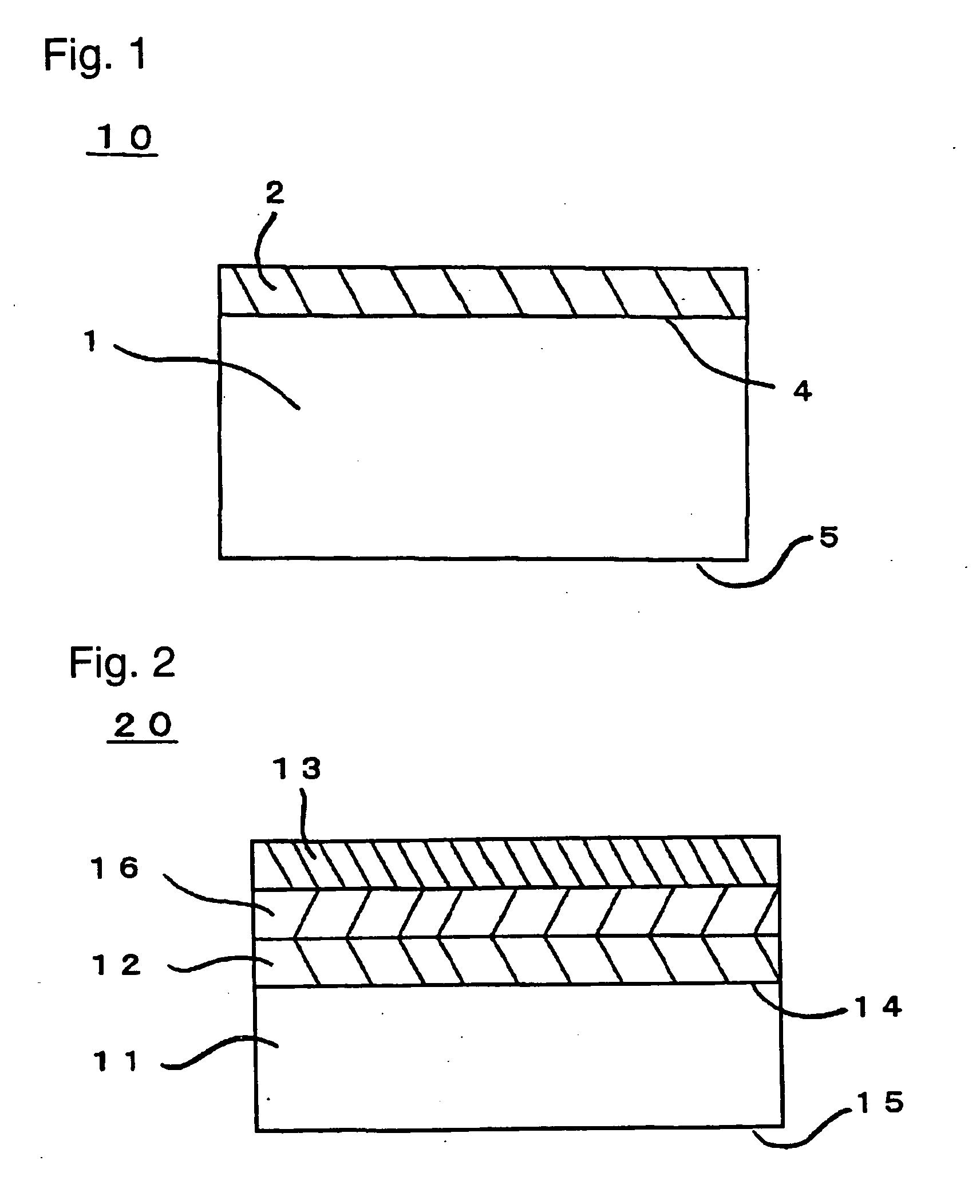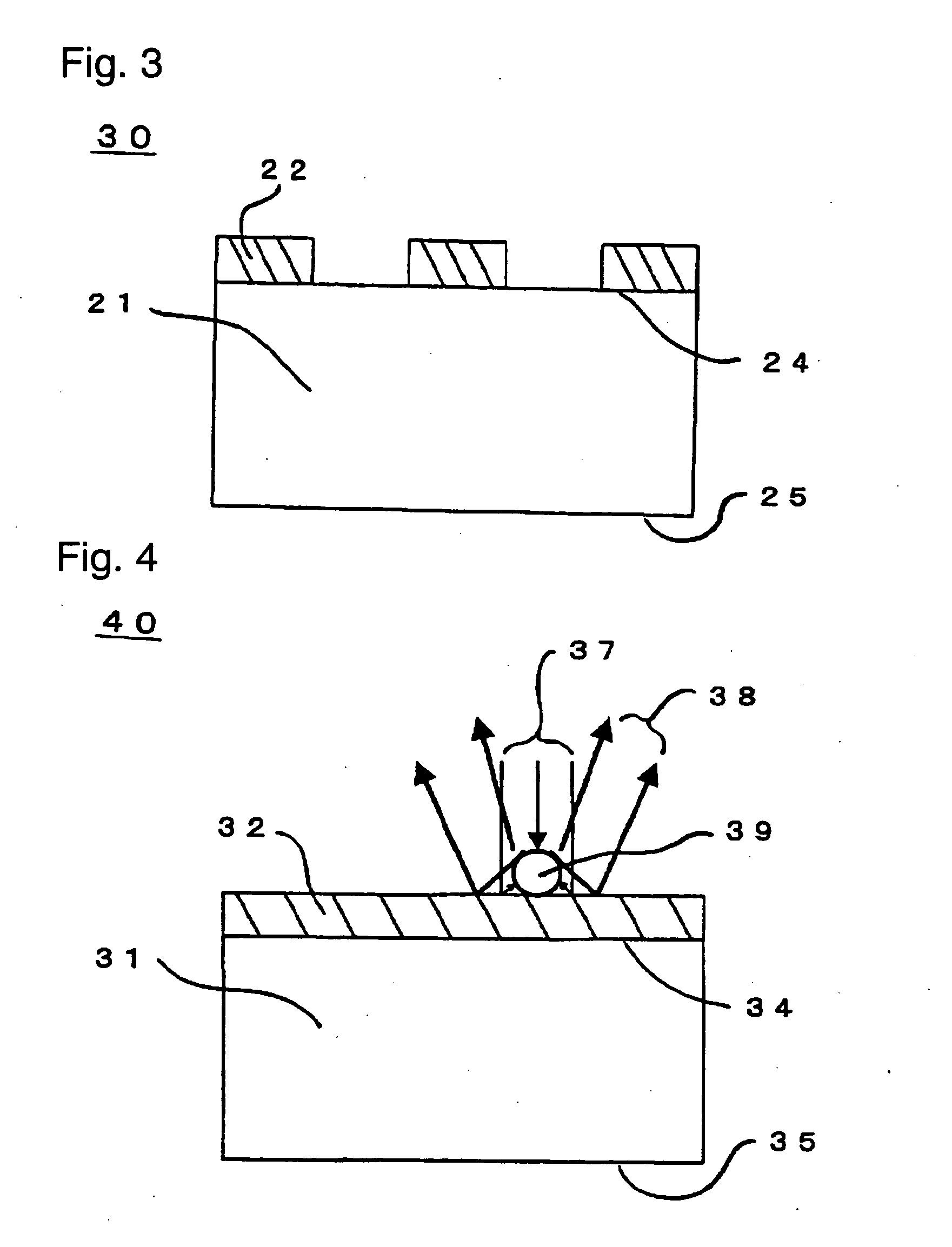Biochip substrate and process for its production
a biochip and substrate technology, applied in the field of biochip substrate and process for its production, can solve the problems of difficult to accurately detect low density analytes, limited probe choices, and expensive probe design, and achieve accurate and sensitive measurements, and enhance the s/n ratio of fluorescence
- Summary
- Abstract
- Description
- Claims
- Application Information
AI Technical Summary
Benefits of technology
Problems solved by technology
Method used
Image
Examples
example 1
[0050] To a mixture of 2.55 g of Ti(OC4H9)4, 17 g of ethanol and 0.75 g of acetylacetone, 1.1 g of 0.1 mol / dm3 aqueous nitric acid was added dropwise with sufficient stirring. Then, the resulting mixture was stirred at room temperature for 1 hour to make a coating solution. A well-washed glass slide (manufactured by Matsunami Glass) having a thickness of 1 mm, a flatness of 50 μm and a refractive index of 1.5 was dipped in the coating solution for 20 seconds and withdrawn at a rate of 24 cm / min to form a film. It was dried at 120° C. for 15 minutes, baked at 550° C. for 30 minutes to obtain a substrate having a TiO2 film on the surface (hereinafter referred to as the present substrate A). The TiO2 film had a thickness of 100 nm, a surface roughness Ra of 50 nm, a refractive index of 2.4 and a surface resistance of 2×1010 Ω / □. For comparison, a glass slide coated with poly-L-lysine (hereinafter referred to as comparative substrates) was prepared.
[0051] For comparison of the fluoresc...
example 2
[0053] The procedure in Example 1 was followed except that instead of the substrate A, a present substrate B consisting of a soda lime glass plate having a thickness of 1 mm, a flatness of less than 50 μm and a refractive index of 1.5 and a TiNx coating having a thickness of about 40 nm, a surface roughness Ra of 30 nm, a refractive index of 2.5 and a surface resistance of 2×1010 Ω / □ formed by sputtering using a Ti target in a gas mixture of Ar and N2 (at a gas flow rate of 30±10 sccm) at a pressure of 133 μPa, a power input of 0.26±0.1 kw and a traveling speed of 2.42±0.5 mm / s without heating the substrate was used, and no comparative substrate was used. The fluorescence was measured, and the fluorescence intensity was high and even over all the spots.
example 3
[0054] The procedure in Example 2 was followed except that a present substrate C prepared by forming a Cr film having a thickness of about 100 nm and a surface resistance of 5×1010 Ω / □ by sputtering using a Cr target instead of the Ti target under the same sputtering conditions as in Example 2 except that the gas mixture of Ar and N2 was changed to Ar gas, and then forming on the Cr film, a SiO2 film having a thickness of about 10 to 20 nm by sputtering using a Si target in O2 gas (at a gas flow rate of 30±10 sccm) at a pressure of 133 μPa, a power input of 0.26±0.1 kw and a traveling speed of 2.09±0.5 mm / s without heating the substrate was used. The fluorescence was measured, and the fluorescence intensity was high and even over all the spots.
PUM
| Property | Measurement | Unit |
|---|---|---|
| refractive index | aaaaa | aaaaa |
| refractive index | aaaaa | aaaaa |
| thickness | aaaaa | aaaaa |
Abstract
Description
Claims
Application Information
 Login to View More
Login to View More - R&D
- Intellectual Property
- Life Sciences
- Materials
- Tech Scout
- Unparalleled Data Quality
- Higher Quality Content
- 60% Fewer Hallucinations
Browse by: Latest US Patents, China's latest patents, Technical Efficacy Thesaurus, Application Domain, Technology Topic, Popular Technical Reports.
© 2025 PatSnap. All rights reserved.Legal|Privacy policy|Modern Slavery Act Transparency Statement|Sitemap|About US| Contact US: help@patsnap.com


